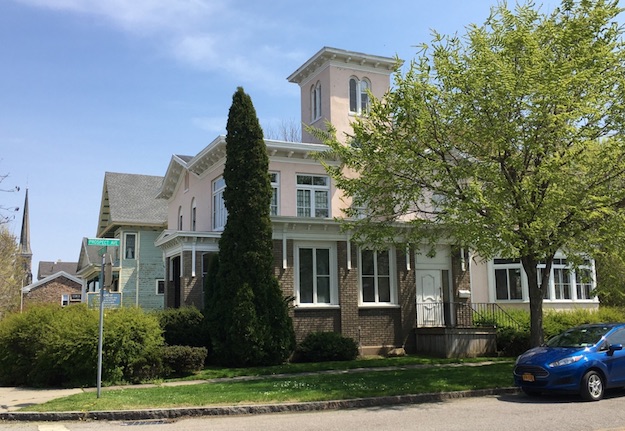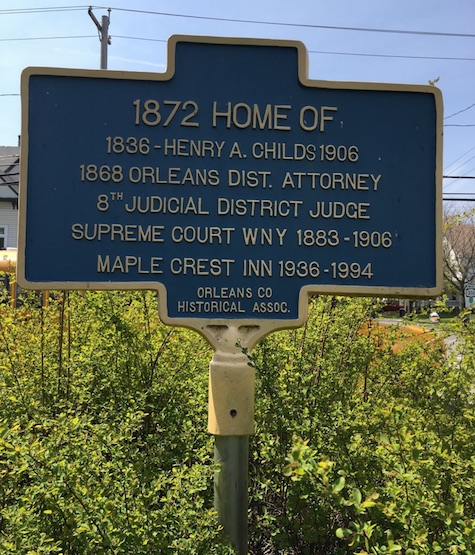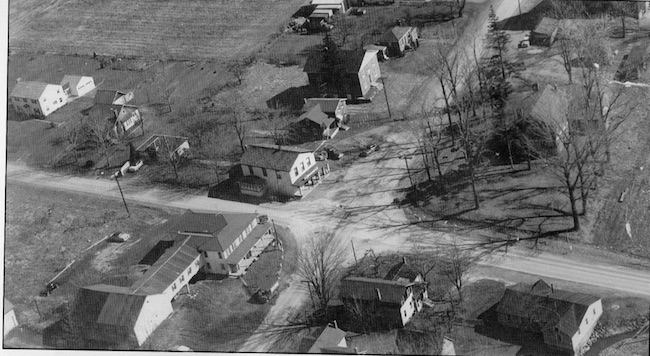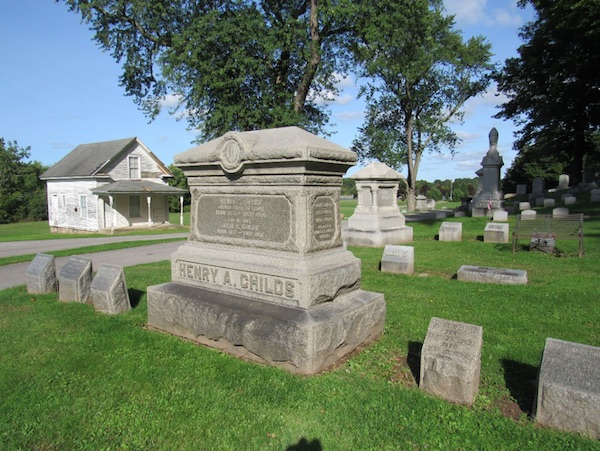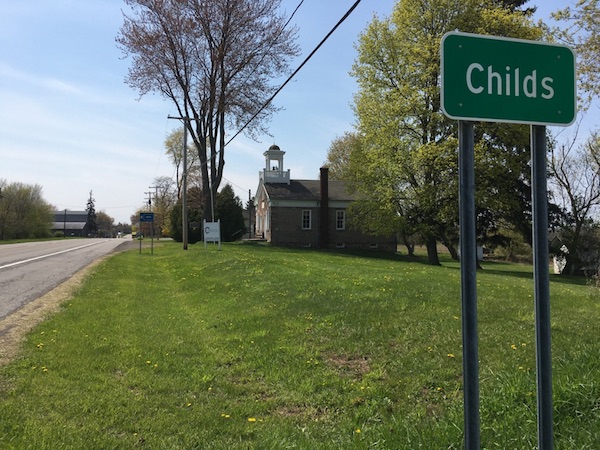Historic Childs: Hamlet named for judge who grew up in Gaines
By Doug Farley, Cobblestone Museum Director
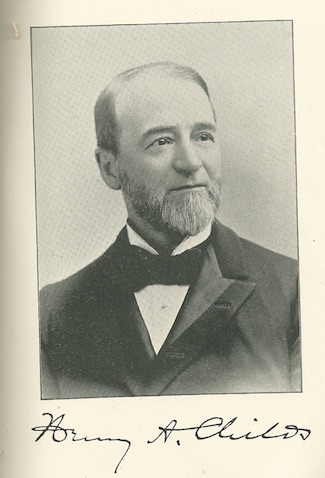
Henry Childs
Author’s note: Webster’s Dictionary defines “eponym” as a person or place that something or someone is named after. One nice benefit of writing articles on the history of the Hamlet of Childs has been that I learn a lot in the process. Such is the case when I learned the eponym for the Hamlet of Childs, namely NYS Supreme Court Justice Henry A. Childs.
Henry Augustine Childs was the eldest son of Levi and Ann (Wright) Childs, born in the town of Gaines on July 17, 1836. After finishing his early education at the Albion Academy, he started to fulfill his childhood ambition to become an attorney, by studying law under Benjamin Bessac in Albion.
Four years later he was admitted to the bar and associated with the firm of Sickles and Graves in Medina. In 1868 Henry was elected Orleans County District Attorney, an office he held for nine years, until 1877.
It came as no real surprise to his fellow Orleans County residents that Henry’s name was placed in nomination for a Supreme Court Justice position with the Western District of New York at the Judicial Convention held in Buffalo in 1883.
He was elected by a large majority and served with distinction in that office from January 1884 until his death in May 1906. His jurisdiction covered Erie, Niagara, Orleans, Genesee, Wyoming, Allegany, Cattaraugus and Chautauqua counties.
Judge Childs married Julia Freeman in 1859 and they had three children. Their family home, seen here, later known as The Maple Crest Inn, is located on the corner of W. Center Street and Prospect Avenue in the Village of Medina. Incidentally, Henry Childs’ son Milford W. Childs Sr. married Pearl Cook, daughter of S.A. Cook, a significant person in Medina history, through his furniture business, the S.A. Cook building etc. Their son, Milford II’s wife Elizabeth, died in January 2021 at the age of 99.
The Medina Tribune published a very enlightening article in 1884 regarding Child’s Supreme Court nomination. “The people…were delighted with the nomination of Mr. Childs for justice of the Supreme Court and the citizens of this county feel greatly honored at his selection as one of the candidates for the position. Mr. Childs is a gentleman in the prime of life, whose character in every respect is above reproach and of the most excellent kind, and whose knowledge and ability will make him one of the best and ablest judges. He possesses the confidence of his neighbors and fellow citizens to the fullest extent, and they are highly gratified at the honor bestowed upon him which they know to be justly merited. This nomination was not the result of any trick or political intrigue but because the convention regarded him as the strongest name to be placed on the ticket.”
Judge Childs’ local fame in the Hamlet of Childs came about in 1897 when the residents of “Fairhaven” wanted to open a U.S. Post Office in that name. That’s most likely when the citizens learned that the name Fairhaven, was, unfortunately, already taken. Postal regulations only permit one post office in the state to use the same name, and Fair Haven was already spoken for in a small town near Oswego. That’s when the decision was made to register the name of the community as Childs, NY.
Hamlet of Childs, early 1900s
The first post office for Childs was located in George Geringer‘s General Store, located at the corner of Ridge Road and Oak Orchard Road in the Hamlet. The Postmaster of Childs in 1897 was Oris C. Knapp. The post office had a short life, closing up shop in 1902, when the mail for Childs was transferred to Albion, a situation that continues to this day.
Judge Childs was selected for the hamlet’s namesake because folks felt he personified the high ideals and integrity of the community, all the while demonstrating the axiom of “A Local Boy Who Makes Good.” It was very fitting that the community was named after Henry Childs during his lifetime. Many times, that sort of honor is done posthumously.
Henry Childs died in 1906 and was buried in Boxwood Cemetery in Medina, shown here. Boxwood Cemetery was established in 1849, and is the resting place of many early settlers. The cemetery includes approximately 5,000 marked burials in the cemetery, spanning from 1849 until the present day. It features entrance ways flanked by Medina sandstone columns and wrought-iron gates built in 1925. Also located in the cemetery is a Gothic Revival style chapel built in 1903 of rough-cut red Medina sandstone, just three years before Justice Childs’ burial.
Judge Henry Childs’ death in 1906 ended his legal career, but it’s fitting that his life still lives on in the community that bears his name.


























